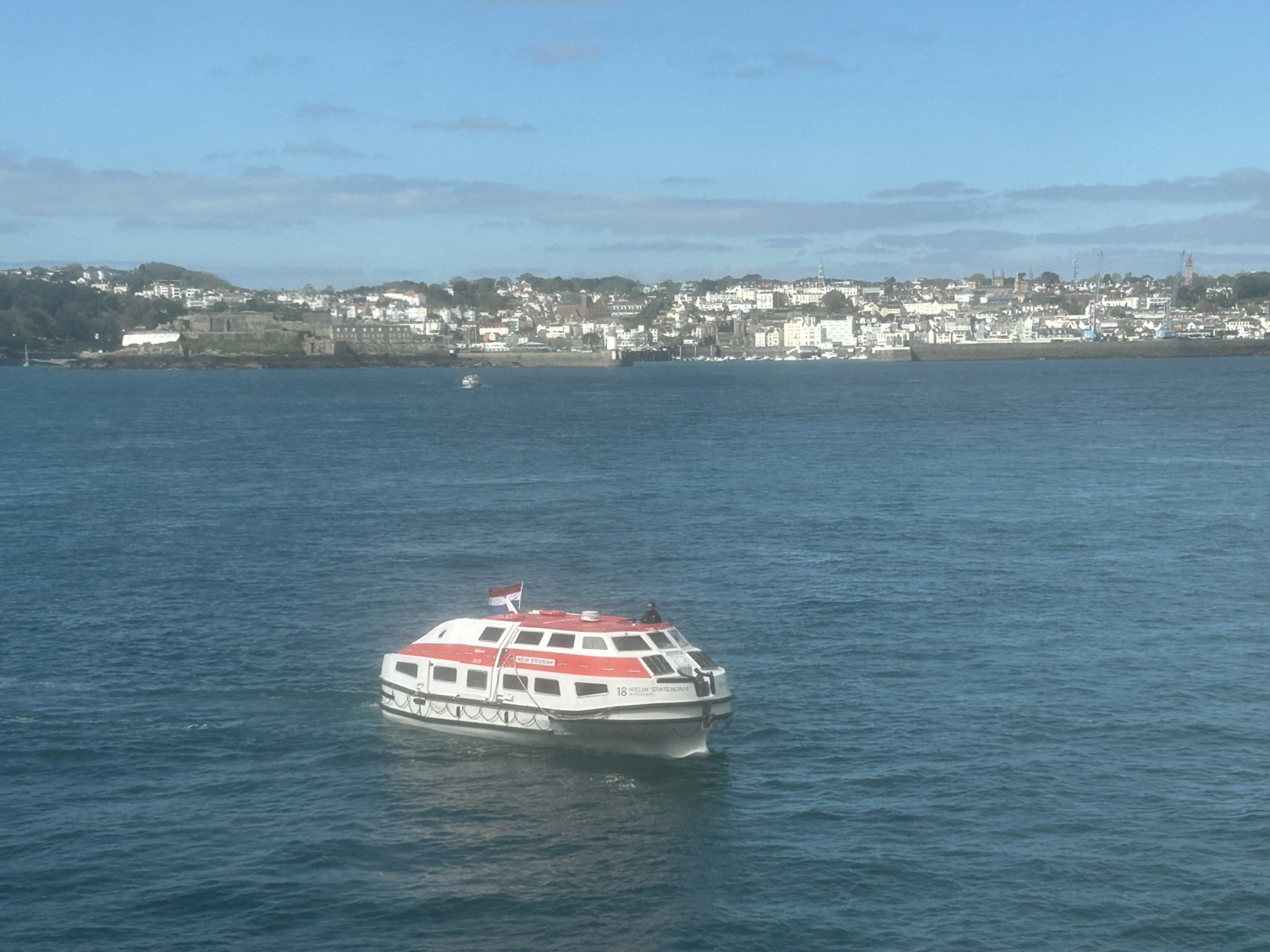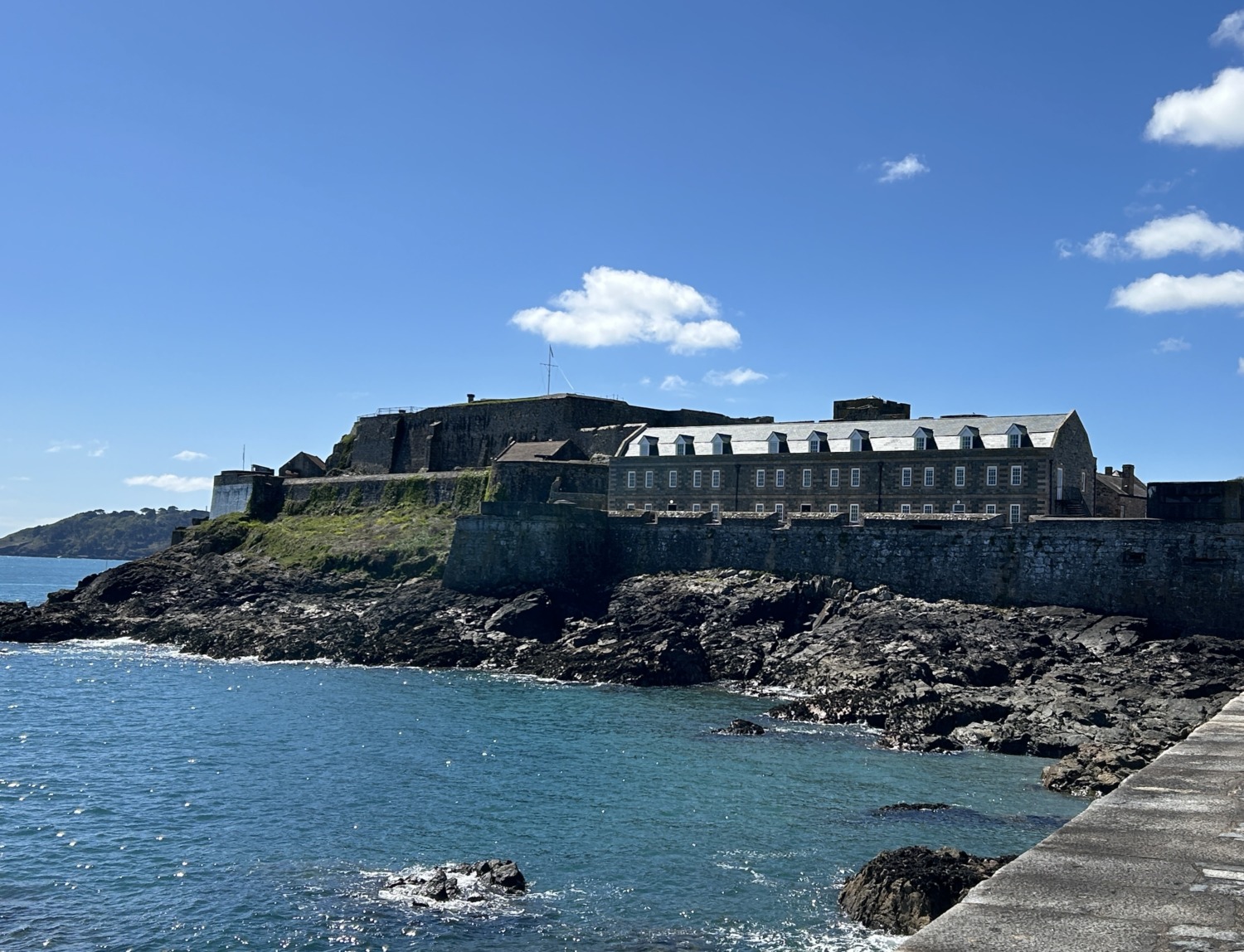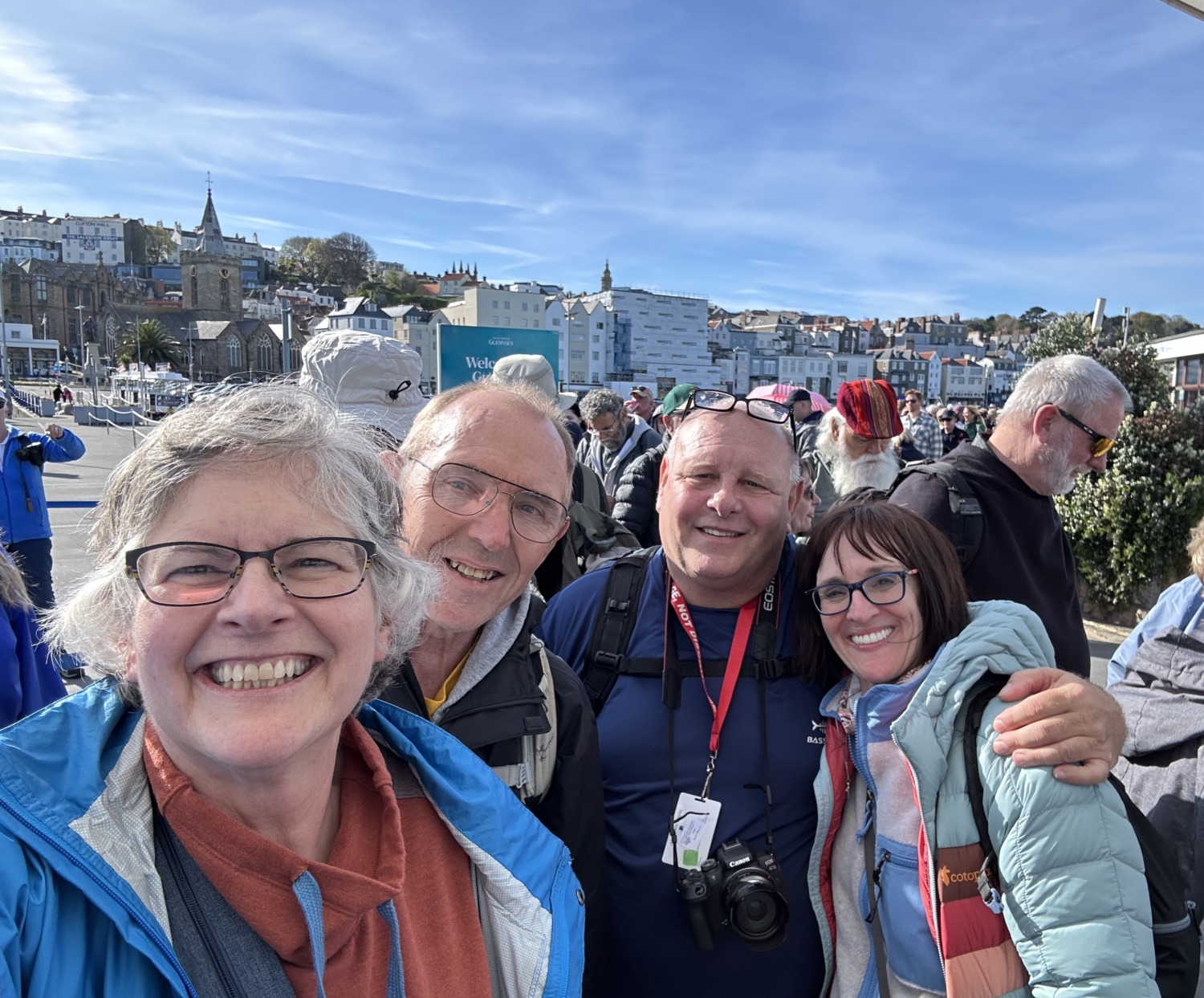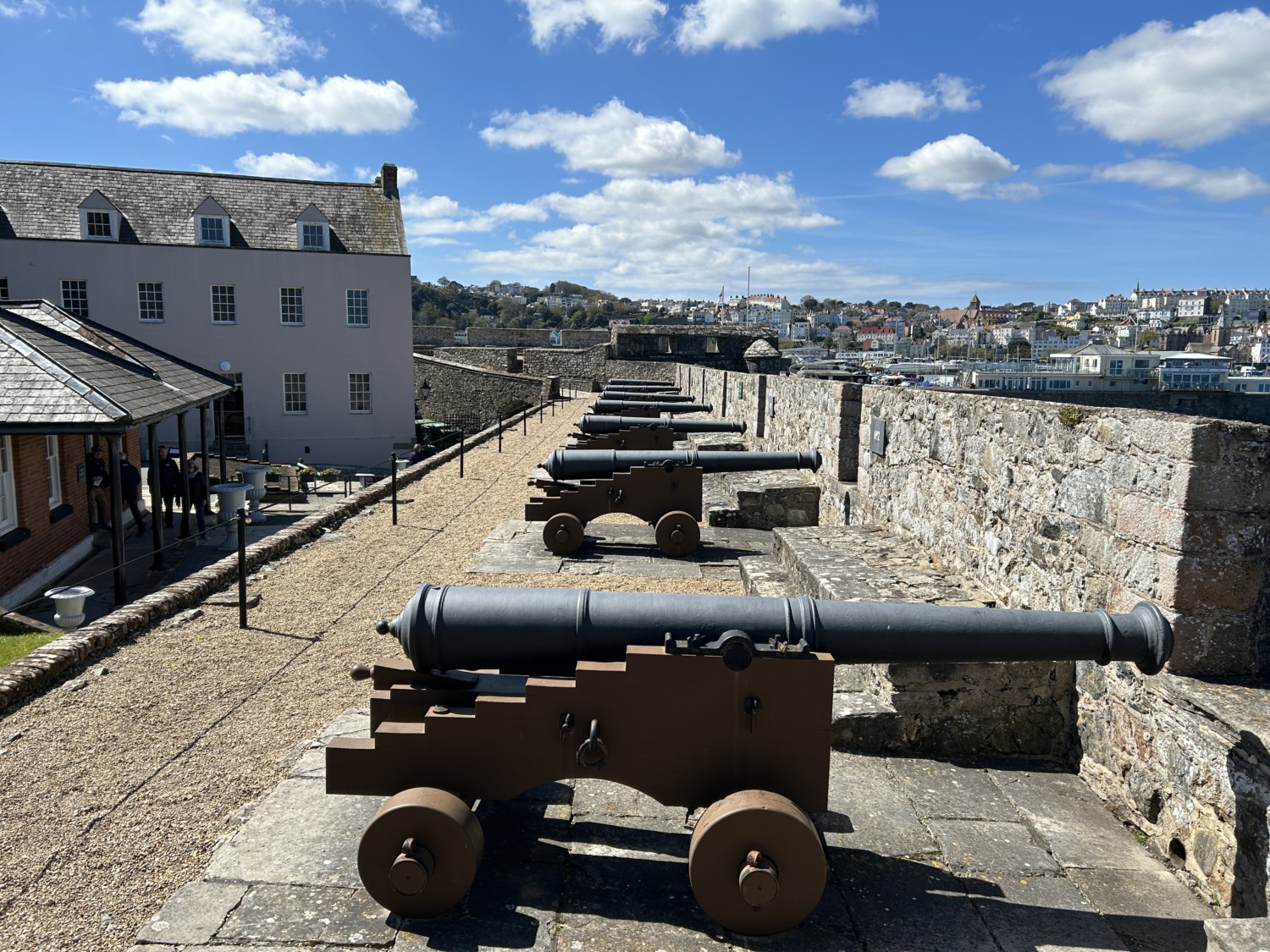I have wanted to go to St Peter Port on the Isle of Guernsey ever since I read ““The Guernsey Literary and Potato Peel Pie Society” by Mary Ann Shaffer. You can read my review of the book here. The book is a beautiful romance and it made me want to go see the place that came alive between its pages.
Guernsey is the second largest island in the Channel Islands, located closer to France than Great Britain. The Bailiwick of Guernsey, which includes other inhabited islands, is a British Crown Dependency. Although they consider King Charles III the head of their government, they are not part of the United Kingdom and they govern themselves. The United Kingdom provides a military and speaks for them on the international stage.
The Channel Islands belonged to the Duchy of Normandy until 1204, when they chose to remain loyal to Britain and its king. The King of England had been Norman since the invasion of William the Conqueror in 1066. In 1204, the King of England lost his control of the Duchy of Normandy. It remained loyal to the United Kingdom, although the United Kingdom abandoned it to the Germans in 1940.
The island was invaded by Germans on June 30, 1940. 80% of the island’s children were sent to stay in rural England to protect them from the shortages during the war. For the next five years, Guernsey was occupied by the Germans. Guernsey was very heavily fortified during World War II, out of all proportion to the island’s strategic value. German defences and alterations remain visible, particularly to Castle Cornet and around the northern coast of the island. Guernsey and Jersey were both liberated on 9 May 1945, now celebrated as Liberation Day on the two islands. Over 1,000 residents of the island were sent to workcamps in Germany.

On the morning of our scheduled stop in Guernsey, Tom and I made our way to the lounge to pick up tickets for the tender to take us to St. Peter Port. It was a beautiful day and we were eager to get going. Unfortunately we had to wait a long time and it was noon before we got seats on a tender.

As soon as we got to St Peter Port, Tom and I headed for Castle Cornet. Castle Cornet was first built as a fortress in 1206. Over the years, as it alternated between British and French ownership, the defenses were improved and the walls built higher. In the 1500’s, batteries and bastions were added to make room for cannon. During the English Civil Wars, Castle Cornet was Royalist while the town of St Peter Port was Parliamentarian. Imagine being fired on by your own fortress! Eventually that was settled and things quieted down until World War II, although Castle Cornet was always occupied by some military force.
Castle Cornet is an interesting maze of walls, tunnels, bastions, barracks, and buildings. It has been added onto so many times that they attach placards to all the walls saying when they were constructed. Wikipedia gives the clearest description of what is currently there:
There are six gateways to negotiate to get to the citadel at the top.
The main gate is concealed from cannon fire from the island. The coat of arms above the gate is that of Queen Elizabeth I. The original curtain wall was built around 1570 but has been refaced to strengthen it since.
The Outer Ward reached through the main gate with its portcullis. A barrack block on the right was built in the 18th century and a 19th-century guard room. The second curtain wall behind dated from the English Civil War period. At the top of the ward is another gate, which twists to make assault harder.
The Barbican is the outermost part of the medieval castle dating from the mid 13th century. The arches inside allow defenders above to attack people below with missiles and liquids, such as quick lime and liquid lead. A passageway and another sharp turn to stop the use of a battering ram. A drawbridge and the original entrance to the 13th century Castle. A vaulted passageway with a tower on top, the original gatehouse later used as the town prison. The passageway became the “prisoners walk”.
The Citadel which had yet another portcullis and door at the entrance and there are considerable works dating from the 1940-45 German occupation period. The top held a square tower from which three Parliamentarians escaped in 1643. Many of the defensive walls in this area were built in the 16th century.
At the top there used to exist the round tower that was destroyed in the explosion of 1672 that killed seven including the Governors wife, Lady Hatton and some children. The medieval Tour Carré can be seen together with the Gunners Tower and its medieval courtyard. The married quarters barracks were built around 1750. The Sutler’s House is the oldest domestic building, having escaped the 1672 explosion. The hospital in the Inner Bailey was built in 1746. The north-east corner of the Castle hold the Royal Battery, built around 1575.
Tom and I had a marvelous time climbing up and down stairs and wandering through the walls. Nothing was straight or straightforward. Our admission let us explore the grounds as well as the four museums within Castle Cornet. I really liked the museums and the way they presented information. Everything was in English, French, and Kid (specially written at a children’s level). We also walked around the lighthouse at the end of the pier. The wonderful little gift shop sold demitasse spoons, so I got my first souvenir.
As we were walking out to Castle Cornet, we noticed an ice cream stand advertising real Guernsey ice cream. This is ice cream made on the island from the milk of the Guernsey cow. Guernsey cows produce a high butterfat milk that has a golden yellow color because of its high β-carotene levels. After a couple of hours walking up and down the steps at Castle Cornet, I insisted we needed some ice cream. Tom got vanilla, and you can see the unusual color. It tasted very buttery. I got mint chocolate chip which tasted more traditional. Both were very yummy and the scoop sizes were just right.
Another fun thing on the pier was the sailing school. Schoolchildren were having sailing and rowing lessons on a large man-made pond while several adult instructors waded around in water about two feet deep. The kids were laughing and shrieking and getting the hang of living on the water. It looked like the perfect way to learn to sail.
Tom and I had intended to see the German war tunnels on the island, but did not have time with our late start. Instead, we explored the wonderful small city of St Peter Port. St Peter Port has a population of 31,000 and is a thoroughly modern city with a lot of charm and fun shopping. We found a grocery store that sold Dr. Pepper, which made Tom happy because he had not had any since we got on our ship (Coke products only). We also picked up another knee brace. The one I got the day before was a little too rigid.
As we were walking up one of the pedestrian shopping streets, we found our new friends Ed and Terri. We joined them for a drink and then took them to the Tourist Information Center. They were looking for a couple of specific souvenirs and we thought there was a good chance they would find them there. They found exactly what they were looking for.

I had been telling Terri about “The Guernsey Literary and Potato Peel Pie Society” and her tour guide also recommended it. So we all trooped over to a bookstore close to the Information Center. The bookstore was small but had two tables full of books about Guernsey. One table was fiction and one was nonfiction.
The bookseller wasn’t busy, so we took some time to talk to him. I asked him if “The Guernsey Literary and Potato Peel Pie Society” was a bestseller on the island and he said, yes it was, but he also said the author had never been to Guernsey and the movie based on the book was not filmed on Guernsey. So he thought it was ironic that it brought so many tourists to the island. He recommended “The Guernsey Girls” as another popular fiction book set in Guernsey. The best way to get to know a place is to talk to the people who live there.

After buying the book, it was time to get in line for a tender back to the ship. Another long, slow wait but we had Ed and Terri to talk to so it was fun. Lines are a good way to get know our fellow passengers. No one likes them, but you might as well take advantage of your time.
It was a perfect day in Guernsey. Tom and I got to learn and explore and then talk to some locals and some friends. The weather was also perfect – 55 and sunny. St Peter Port and Guernsey would be worth a return visit someday.







One comment